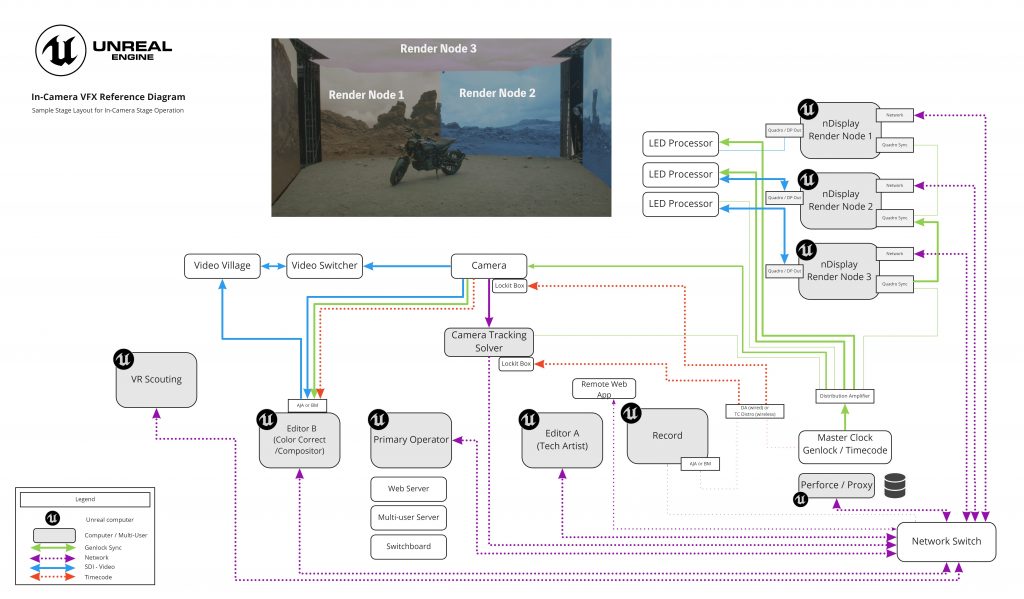Virtual production techniques involving high-resolution, direct view LED screens and the use of in-camera visual effects offers filmmaking creatives such as set designers, stunt coordinators, directors and VFX teams huge efficiencies and freedom. They have large canvases, sophisticated game engine technology and complex creative toolsets at their fingertips. Producers can gain more control of their budgets. But how do the editors who take everything that’s shot and assemble and finesse it into a finished product benefit?

On-set editing
Whether working in film, TV or on commercials, editors can now be more involved on-set. With the right virtual production workflows in place, they can make creative decisions and start rough cuts much earlier on VFX-driven productions. They can immediately see what the final images will look like, even where dealing with CG characters and sets, rather than wait until they are settled down in the edit suite.
Asset management
As virtual production is a more collaborative process, editors and VFX teams can work in harness on-set and there’s no need to wait to receive final rendered VFX shots. Editors can manage in-progress visual assets, 3D models or VFX textures in context of the video they are associated with. As they are able to access and render them throughout the entire post production process, creative decisions can be made much later; switching camera angle, moving a set element or changing the lighting, for example.
Editors can now have a bigger creative impact earlier on in a production and removes the need to request reshoots or additional photography.
The timeline
Particularly on large, sprawling big budget production, this increased flexibility brings significant time benefits. VFX supervisors, post production supervisors, artists and editors can make decisions much earlier, during previsualisation and on-set. They can make changes to visuals later into the process, closer to a final render, massively shifting the timeline of the creative process.
The time, people and power resources required to constantly render shots to see how they look in a cut, and then send them back for amends, only to be rendered again is also dramatically reduced.
If you are embarking on your first adventure shooting on an LED stage, using in-camera visual effects technology and shifting to making more creative decisions during previsualisation and on-set and you are looking for advice, guidance and support, we are here to help. Contact John Rowe (john@mondatum.com) or Colin Birch (colin@mondatum.com) for an initial chat.
Source: TVB Europe
Main image: No Film School / The Film Look


